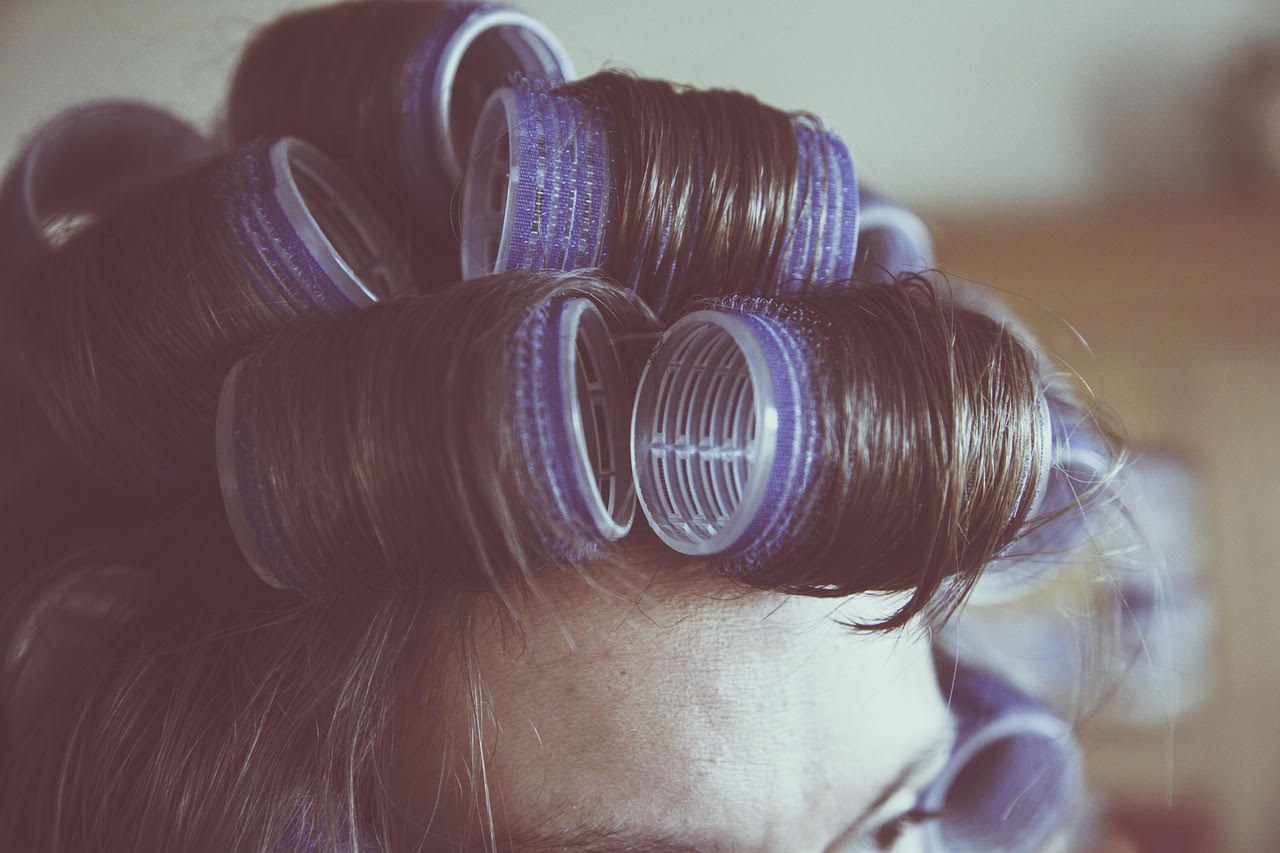It began in the kitchen, as these things typically do. I imagine my grandma Mary casually looking over the curls of her girlfriends and mentioning that she used to “do hair” back in Defiance, where she and Bill had met and began their family. In the move to the countryside of Hardin County, there wasn’t a salon for her to resume her work. But there were babies, and farm life, so maybe it was time to set aside her scissors. I add this to the endless list of questions I would ask my grandmother, if I still had her earthside.
In this pretend story of how it began, one of her friends, probably Martha, asked her to trim up her neckline or roll her curls a bit tighter for a special occasion. So she had her sit at the kitchen table and they gabbed while Mary styled. Next thing you know, ladies were calling up for a favor, finding a seat at the table.
Eventually, her husband decided Mary needed space for these endeavors and the chairs and rollers of Maryann’s Beauty Shop took residence in the front of the house. At the same time each week the same women arrived, waiting their turn for Maryann to scrub their scalp, and roll, dry and tease their locks to their liking.
Part of my grandmother’s art was in knowing a style that would highlight a particular woman’s individual beauty. She played with lines, color, and texture the way a painter would, but her canvas showed up each week and changed over time as all humans do. Of course, this required craft, the way she could wield a pair of scissors. She had an eye for beauty. As it turns out, she also had an ear for it.
Without knowing it, women often approach the beauty salon wanting a new style because they want to reflect a new way of being in the world. The work of the beautician (as they called themselves then) was hearing from these women how they wanted to be portrayed. Sometimes these clues were thinly veiled, and other times instructions came outright. In the in beauty salon, beauty isn’t in the eye of the beholder, it’s in the heart of the beholden. Week in and week out, Mary would hear the stories and craft the image of what she heard.
Eventually Maryann stepped aside from her duties and my mother took over behind the chair. My parents had moved into the farmhouse to raise their family, giving my mother the freedom to peer in on her babies while rolling a perm.
In 1994, Maryann’s Beauty Shop moved to a new space on the other side of the house, one that required me to dash four steps outside. The same ladies continued to show up from week to week, wanting their specific style, along with a new mix of younger people needing cuts and color to keep with the trends. The change of location brought a new name: Wingfield’s Hairitage.
My favorite days in the shop were the Saturdays when girls came to be styled for school dances. Clad in flannel button-ups, sometimes from my father’s closet because the unsaid code was broken, girls anxiously awaited their turn for the hot rollers. Many of the girls were athletes and farm girls without regular occasions to put on heels and a dress. Some felt unrecognizable under the piles of curls, unaware that such a beauty simmered beneath the surface of their day-to-day life.
These young girls eventually returned for weddings. On one particular wedding day, I popped over to the Shop while the mother of a bride sat in the chair. Mom had me pour a glass of champagne, to celebrate. The mother nervously knocked over the flute and I watched her strong facade shatter like the broken glass. Then the words tumbled out, “ex-husband” and “aisle” and “new girlfriend.” While this mother felt the beauty of the day for her daughter, it brought about her own feelings about marriage, hope, and her own lovability. My mother turned her toward the mirror and reminded her of the mother she was, and the woman she was: the kind of woman who bears the beauty of dignity.
The momentous days stretched from weddings to funerals. As the women my grandmother and then mother had washed and rolled each week for many years all reached the age of passing, both my grandmother and my mother would be called upon to help these women appear as they would want to be remembered. They would arrive at the funeral home with steeled emotion at the first glance of a lost customer and friend. After a long battle with cancer or pneumonia, these women rarely resembled the vibrant life that had encompassed the 70 or 80 years previous to their illness. The Hairdresser’s job was to return them to their natural state of beauty, beyond age and death.
Growing up in an environment where appearances helped pay the bills shaped my understanding of this idea of beauty. We didn’t leave the house with unkempt hair and my mother was quick to recommend a good concealer. In rebellion, I was never one to adhere to trendiness; I opted for sensible footwear over fashion. My hair spent most of its teen life in a ponytail despite my mother’s best efforts to get me “out of the box.” It was easier not to put out the efforts that beauty seemed to require. I didn’t have the time or energy to sit in my mother’s chair, except for the quarterly trim.
It wasn’t until I was grown, with a compassionate stylist of my own, that I understood the motive behind my foremothers in the beauty business. The years of feeling as if I needed “fixed” were reframed as I had my own daughters, one who fought her beautiful red curls. I didn’t want them to feel they needed to be more like each other, or anyone else, and rather than taking them away from the mirror, I found myself asking them to look deeper into the reflection.
At the Shop, women were loved as they arrived – when they felt a mess – and they left feeling their beauty. Women would remark about how the beauticians “work their magic” in the salon, but it wasn’t from trimming dead ends or covering stray greys. The real magic was in seeing and hearing the beauty already present and magnifying it.
The Shop is closed now, it returned to its original state of simply being a home. I didn’t take on the yoke of my family’s business; in my folly, I told myself I wanted to do something more meaningful than helping someone avoid the truths of old age. But I didn’t recognize my inability to defy my DNA. I didn’t pick up the family scissors, but I bear the ability, like my grandmother and mother, to converse with a brick wall.
And I share their habit of recognizing hidden beauty. My forebears engaged in the physical act of washing and rolling and setting and teasing. I arrange words on a page or bodies on a yoga mat. But the women in my family, we all turn women toward the mirror and reveal to them – remind them – who they are in the core of their being. Our tradition matches the outsides of a person to the best of their insides, and it’s a legacy I hope to bestow upon the tiny humans I’m raising. A heritage I’m proud to instil into my home and the world.
*****
Michele Wingfield Minehart writes about the beauty hidden in life’s struggles at www.micheleminehart.com. She teaches yoga in northwest Ohio while raising 4 children and making meaningful contributions to her community. To best connect with Michele, invite her to join you for tacos (she cannot resist such invitations) or find her on Facebook (@mwminehart) and Instagram (@mwminehart, @micheleminehartyoga).





